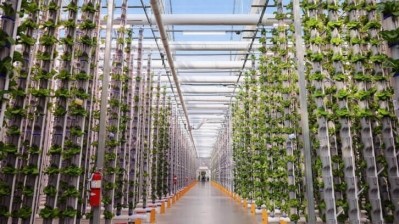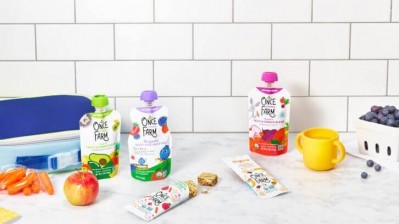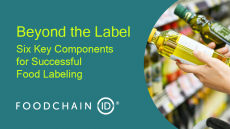Regenerative agriculture, renewable energy is ‘best path forward’ for reducing Scope 3 emissions

Compared to Scope 1 emissions, which can be directly measured from a company (i.e. fuel in vehicles), or Scope 2 emissions, which can be measured from purchased utilities, Scope 3, which can account for up to 95% of a CPG company’s total carbon emissions, reduction targets are vital in driving low or no carbon agriculture within the industry due to its direct relationship with the agricultural supply chain and the use of land and energy resources.
Along with COP28’s inclusion of sustainable food and agricultural systems to help mitigate global warming by 1.5 degrees Celsius (34.7 degrees Fahrenheit), addressing Scope 3 emissions is normalizing within the food and beverage industry, particularly when there are multiple collaborations along the supply chain to share and reduce costs, improve efficiency and enhance brand reputation.
Considering agriculture makes up about 25% of the world’s carbon footprint, Nash said, companies implementing regenerative agriculture practices are the “best path forward for reducing carbon at the farm level,” particularly in countries with thousands of smallholder farmers.
Nash suggests renewable energy, “where it’s an option,” emphasizing the heavy manufacturing and agricultural supply chains that can benefit from it. He also emphasized the “harmonization of supply chains,” where companies can localize their production facilities to be closer to their customers and minimize the transportation carbon footprint.
Sharing the costs with partners along the supply chain
Nash noted that during Ingredion’s initial path towards sustainable sourcing, its “customers were expecting us to do the work and not pay any more for it.” However, over time, the partnerships have evolved into “mutual benefit to do this work,” citing the intent to “bring partners along the supply chain to help share the costs,” particularly as more attention is paid across the value chain on reducing Scope 3 emissions, which creates more incentive to work together.
“It’s becoming more of a norm, because this shift in collaboration means that you no longer have a consumer-facing company that’s just saying, ‘What’s in my best interest?’ We’re starting to look at what the farmer is getting out of this? What is the ingredient supplier—like Ingredion—what are we getting out of this? What is the end customer getting out of this? What is the consumer getting out of this? And what’s the planet getting out of this?” he elaborated.
Nash added, “That approach to saying that we’re going to collaborate, that we’re going to make sure that all stakeholders are getting something out of this, I think is what has led to open the floodgates to people collaborating along their supply chain.”
Citing Ingredion’s partnership with PepsiCo on a regenerative agriculture project for a pilot project in 2021, an ambitious commitment to practice regenerative farming across more than seven million acres by 2030, Nash noted that the collaboration between the two companies located in different points along the supply chain was a proof-of-concept to “share the cost and both claim the full benefits out of the agricultural reduction,” including claiming the full 9000 metric tons of carbon reduction under the Greenhouse Gas Accounting Protocol.
Sharing the cost and expanding scope reductions caught the attention of the industry, Nash said, with the potential to cut everyone’s costs by 25% and still claiming the full benefits.
“The important thing is that as an industry, food and beverage is really starting to embrace this collaboration along the supply chain. Some companies have been doing this for decades, but overall, we’re seeing a willingness for people to do this kind of collaboration … because when the industry starts looking at this as a whole … that’s how we’re going to get some economies of scale and really show progress that has an impact globally,” he emphasized.
Where to start a Scope 3 reduction plan? Follow the math
Reducing Scope 3 emissions starts with “following the math … “with a little insight along the way,” Nash suggested.
“If I’m thinking about Ingredion … and I look at the math, my scope 3 emissions make up about 72% of our overall company carbon emissions. So, my Scope 1 and 2 combined [are] 28%. My biggest opportunity to drive impact is scope 3. If I look at the 15 categories of Scope 3 emissions, our three largest in order of largest are downstream customer use, agriculture and then transportation,” he explained.
Nash added, “Rather than people who try to spread themselves too thin and tackle everything … looking at the math [tells] me … the biggest opportunity to balance that. Where do you have resources, where do you have cost? How much does it cost to have an impact?”
He noted that accounting for a region’s energy policy, for example Europe’s strategy for 100% renewable energy, can also help determine how much a company needs to invest in that area.





















